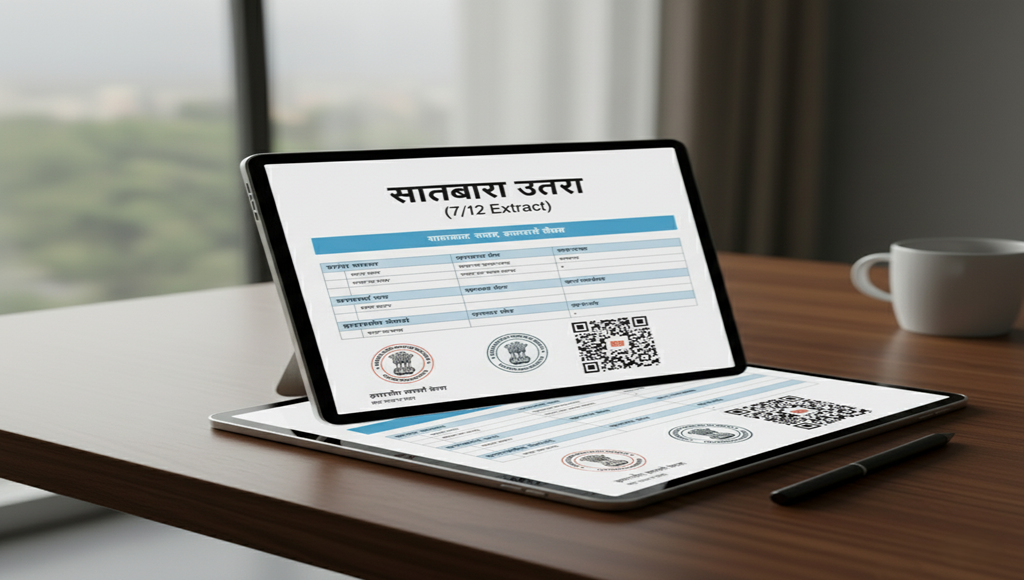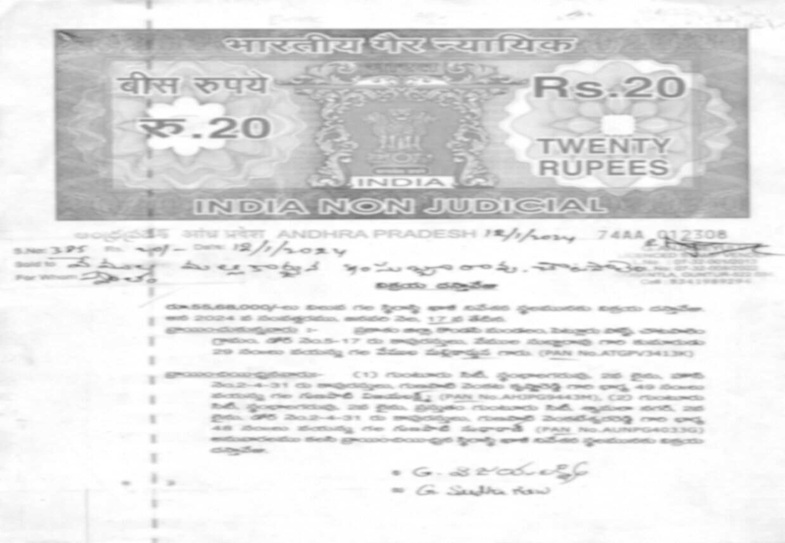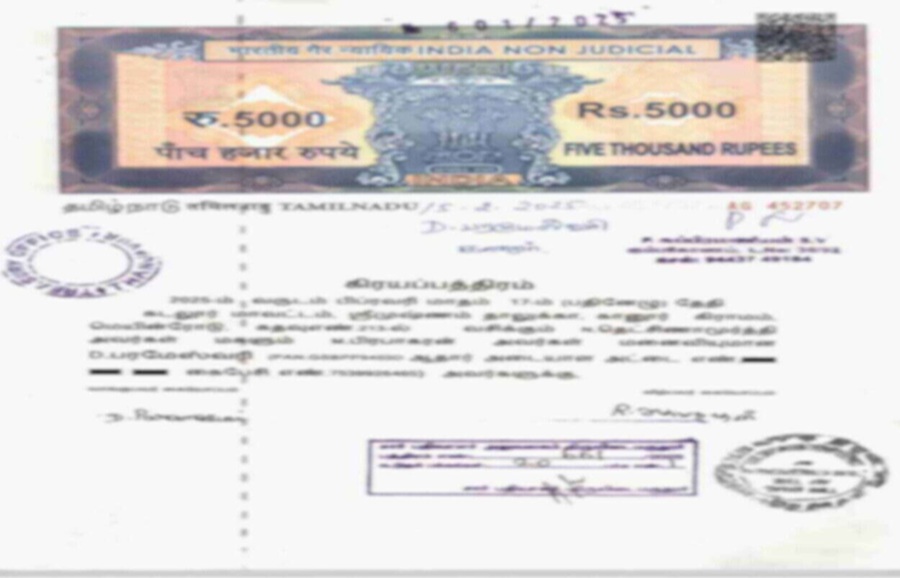The 7/12 Utara, also known as “Saath Baara Utara,” plays a crucial role in land management in Maharashtra, India. It is an essential land record document that provides detailed information about land ownership and agricultural aspects. Understanding this document is vital for individuals engaged in agricultural activities or those looking to purchase land in the state.
Typically issued by the revenue department, 7/12 Utara includes a wealth of information such as land ownership details, land use, and crop patterns. Accessing this document can often be done online, making it easier for landowners and prospective buyers to obtain necessary land details efficiently. Being aware of its significance can prevent legal issues related to land transactions and ownership disputes.
Translating the complexities of land records into actionable insights, the 7/12 Utara serves as a pivotal tool in ensuring transparency and legal clarity in land dealings. This article will delve into the various aspects of the 7/12 Utara, making it easier for readers to grasp its overarching importance in land transactions within Maharashtra.
Key Takeaways
- The 7/12 Utara provides vital information pertaining to land ownership and usage.
- Accessing 7/12 Utara documents online simplifies land transactions for stakeholders.
- Understanding 7/12 Utara is key to navigating legalities in land ownership and agricultural practices.
Understanding Land Records in India
Land records in India are crucial for establishing ownership and rights related to land. They serve as a legal document for transactions, claims, and disputes over property.
In India, the most commonly referred land record includes the 7/12 Utara. This document contains key information regarding agricultural land and ownership details. It is essential for farmers and property buyers alike.
The primary components of land records include:
- Name of the owner
- Land survey number
- Type of occupancy
- Area of land
- Crop type and yield
Each state maintains its own system of land records, largely due to historical and administrative variations.
For example, in Maharashtra, the 7/12 extract is vital for identifying land ownership and rights. It combines data from village forms that pertain to ownership and agriculture.
Additionally, other forms of land records such as the 6 Utara document assist in tracking ownership transfers and mutations. This clarity helps prevent disputes and ensures transparent ownership.
With advancements in technology, many states are digitizing land records. This move aims to facilitate easier access and verification of land ownership, thus streamlining processes for the public.
7/12 Utara: An Overview
The 7/12 Utara is a vital land document in Maharashtra, playing a crucial role in land ownership and agricultural practices. It provides essential details for property transactions and land rights.
Definition and Purpose
The 7/12 Utara, also referred to as “Saath Baara Utara,” is an extract from the land records maintained by the revenue department in Maharashtra. It comprises two main forms: Form VII, which contains land ownership details, and Form XII, which focuses on agricultural aspects.
This document serves multiple purposes, including verifying ownership, establishing rights, and facilitating property transactions. It is also essential for tax collection and is often needed when applying for loans or permits. Buyers and landowners rely on this document for legal clarity regarding land-related issues.
Historical Context
Historically, the 7/12 Utara has been significant for farmers and landowners in Maharashtra. It has evolved from traditional record-keeping methods to a more structured document recognized by legal authorities.
The origins of this extract relate to the need for transparent land administration practices. The introduction of government regulations around land records helped formalize ownership and reduce disputes. Over the years, updates and digitalization initiatives have made access more convenient for the public. This shift aims to enhance transparency and ensure that land records reflect current ownership accurately.
Components of 7/12 Utara
The 7/12 Utara document contains essential information regarding land ownership and agricultural practices. It is structured to provide clear details on land specifics, owner information, cultivation practices, loan eligibility, and taxation liabilities.
Land Details
This section provides a comprehensive overview of the land itself. It includes measurements, the total area, survey numbers, and classifications, such as whether the land is agricultural or non-agricultural.
Typically, land details are recorded in a systematic format, often including charts or tables. The document reflects whether the land has been developed and lists any encumbrances or disputes associated with it. Such detailed information is critical for prospective buyers or financial institutions assessing the land’s value.
Owner Information
Owner information specifies the names of the landowners, their legal status, and any co-ownership details. It includes the owner’s unique identification numbers, such as Aadhaar or PAN, which verify their identity.
This section is crucial for establishing ownership rights and responsibilities. It may also list any historical transfers of property, thus clarifying the chain of title. Knowing the owner’s details helps in determining any legal recourse needed should disputes arise about the land.
Cultivation Details
Cultivation details outline the types of crops currently grown on the land, including seasonal cultivation practices. It specifies the area under cultivation, crop variety, and planting seasons.
Moreover, the document may include data on soil type and fertility, which influences agricultural productivity. Understanding these factors is essential for potential investors and farmers considering land use strategies or planning future seasons.
Loan Details
This section addresses the land’s eligibility for bank loans and other financial assistance. It verifies if the land is mortgageable and specifies any existing loans or mortgages secured against the property.
Banks typically require this information during the loan approval process. The clarity of financial obligations tied to the land is critical for applicants seeking funding for improvements or agricultural projects.
Taxation Information
Taxation information details any property taxes owed and the history of tax payments. It may include information on local tax rates and any exemptions or concessions applicable to the land.
Understanding these details helps landowners comply with local tax regulations and avoids any potential penalties. This information is also vital for buyers who need to assess the financial responsibilities they will undertake.
Accessing 7/12 Utara Documents
Accessing the 7/12 Utara document involves understanding both online and offline procedures. Additionally, authorized personnel can assist in obtaining the document when needed. The methods of access vary, providing flexibility for individuals seeking this important land record.
Online Procedure
To access a 7/12 Utara document online, individuals can visit the official revenue department website of Maharashtra. Users must register on the portal, providing basic personal information to create an account.
Once registered, they can log in and navigate to the land records section. Here, they can search for the 7/12 extract by entering relevant details like village name, survey number, or property owner’s name.
After retrieving the information, users may be able to download a digital copy of the document directly. Digital signatures enhance the document’s legality, ensuring it is valid for official use.
Offline Procedure
Accessing the 7/12 Utara document offline requires visiting the local revenue office or the Tehsildar’s office in the respective district. Individuals should bring necessary identification and property details to facilitate the process.
It’s advisable to fill out a request form, which can typically be obtained at the office. Providing information like the property survey number, owner’s name, and any related documents can expedite retrieval.
The officials will then locate the records in their database. After verification, individuals can obtain a physical copy of the 7/12 Utara document for a nominal fee.
Authorized Personnel
Authorized personnel, such as registered land surveyors or legal representatives, can assist in obtaining the 7/12 Utara document on behalf of the property owner. These professionals often have experience navigating the systems in place.
They can simplify the process by ensuring all required documents are ready and accurate, thereby reducing the likelihood of delays. Engaging authorized personnel may be beneficial, particularly for those unfamiliar with the legalities involved in land documentation.
Using experts can enhance the efficiency of accessing these important records, ensuring all necessary steps are completed promptly.
Legal Significance of 7/12 Utara
The 7/12 Utara serves as a crucial legal document for land transactions and ownership disputes involving agricultural properties. Its comprehensive nature ensures that various legal aspects are addressed, making it indispensable for farmers and landowners alike.
Property Disputes Resolution
The 7/12 Utara plays a vital role in resolving property disputes. It includes important details such as land ownership, boundaries, and historical land use. In cases of conflict, this document serves as definitive evidence in legal proceedings.
When disputes arise, the 7/12 extract allows courts to quickly ascertain rightful ownership, preventing prolonged litigation. Its accuracy helps establish clear titles, making it easier for authorities to mediate and resolve issues efficiently.
Furthermore, the record is regularly updated by the revenue department, which adds to its reliability as a legal resource. Its legal standing means that it can be used effectively in arbitrations and court cases related to land claims.
Agricultural Practices
In Maharashtra, the 7/12 Utara also impacts agricultural practices. It provides essential data regarding land classification, crop types, and irrigation facilities. This information is crucial for farmers when applying for loans or government subsidies.
Farmers rely on accurate details in the 7/12 extract to plan their agricultural activities effectively. For instance, knowing the type of soil and previous crop yields helps them make informed choices.
Moreover, the extract supports the implementation of sustainable farming practices by ensuring that land use complies with government regulations. It encourages farmers to track productivity and engage in practices that maximize resource utilization.
Sale and Transfer of Property
The 7/12 Utara is fundamental in the sale and transfer of property. It acts as proof of ownership, which is a prerequisite for any property transaction. Buyers and sellers utilize this document to verify that the land being transferred is free of disputes.
Moreover, banks and financial institutions often require the 7/12 Utara for processing loan applications against agricultural land. It carries weight in establishing the market value of a property based on its historical and current usage.
The document also facilitates transparent title transfers, reducing the chances of fraudulent transactions. Its detailed record-keeping supports the integrity of the property market in Maharashtra, uplifting the confidence of landowners and investors alike.
Challenges and Errors in 7/12 Utara
The 7/12 Utara document, while crucial for land ownership validation, often faces various challenges. Discrepancies in recorded information, delays in updating records, and hurdles in the rectification process can lead to significant issues for landowners.
Common Discrepancies
Discrepancies in the 7/12 Utara can arise from inaccurate data entry, outdated information, or clerical errors. Common issues include mismatched land area measurements, incorrect ownership names, and discrepancies in cultivation details. These inaccuracies can lead to legal complications, affecting property transactions and ownership claims. It is essential for landowners to regularly verify the details on their 7/12 Utara to ensure accuracy and facilitate smooth transactions.
Updating Records
Updating records on the 7/12 Utara can be a time-consuming process. Landowners often encounter bureaucratic delays when trying to correct or update information related to changes in ownership or land use. These delays may result from inefficient administrative processes or documentation requirements that are not clearly communicated. As a result, property owners may find themselves dealing with outdated records, which can negatively impact their ability to sell or lease the land.
Rectification Process
The rectification process for errors in the 7/12 Utara involves several steps that can be cumbersome for landowners. Initially, an application must be submitted to the appropriate revenue department, detailing the discrepancies. Supporting documents, such as sale deeds or identity proofs, are often required. After submission, the process may take weeks or even months for resolution, depending on local bureaucratic efficiency. Landowners should be prepared for potential challenges, including requests for additional documentation or multiple visits to government offices.
Role in Agricultural and Land Development
The 7/12 Utara serves a crucial role in agricultural and land development in Maharashtra and Gujarat. This document provides detailed information on land ownership, crop type, and agricultural usage.
Farmers rely on the 7/12 Utara for various purposes. For instance, it helps in:
- Accessing Financial Aid: Farmers often need this document to secure loans from banks or financial institutions.
- Legal Disputes: It serves as evidence in disputes regarding land ownership and rights.
The document includes two forms: VII (Record of Rights) and XII (Register of Crops). These forms are essential for assessing:
- Land Fertility: By indicating the type of crops being cultivated, it helps in understanding soil utilization.
- Land Taxation: Authorities use this data for assessing property taxes and implementing agricultural policies.
In summary, the 7/12 Utara contributes significantly to the agricultural landscape by ensuring that farmers have the necessary information for development and expanding their operations. It is a vital tool for maintaining clarity and legal accuracy in land ownership.
Comparative Analysis with Other Land Records
The 7/12 Utara is a unique land record document primarily used in Maharashtra and Gujarat. Its specific functions differ from other land records like the Record of Rights (RoR) and other state government land documentation.
Key Features of 7/12 Utara:
- Ownership Information: Contains details about land ownership, including survey numbers and village information.
- Agricultural Aspects: Integrates agricultural qualities, vital for farming purposes.
Comparison with Other Records:
Feature | 7/12 Utara | Record of Rights (RoR) | Patta/Title Deed |
Ownership Details | Yes | Yes | Yes |
Agricultural Data | Yes | No | No |
Online Accessibility | Available | Varies by state | Not universally available |
Mutation Process | Standardized | Varies, can be complex | Simplified in some areas |
Other records, like the RoR, may not include detailed agricultural data. Patta or title deeds provide ownership evidence but often lack additional information regarding the land’s agricultural potential.
The 7/12 Utara also stands out for its accessibility in Maharashtra through online platforms. This feature enables quicker verification and transparency compared to many traditional land record systems.



